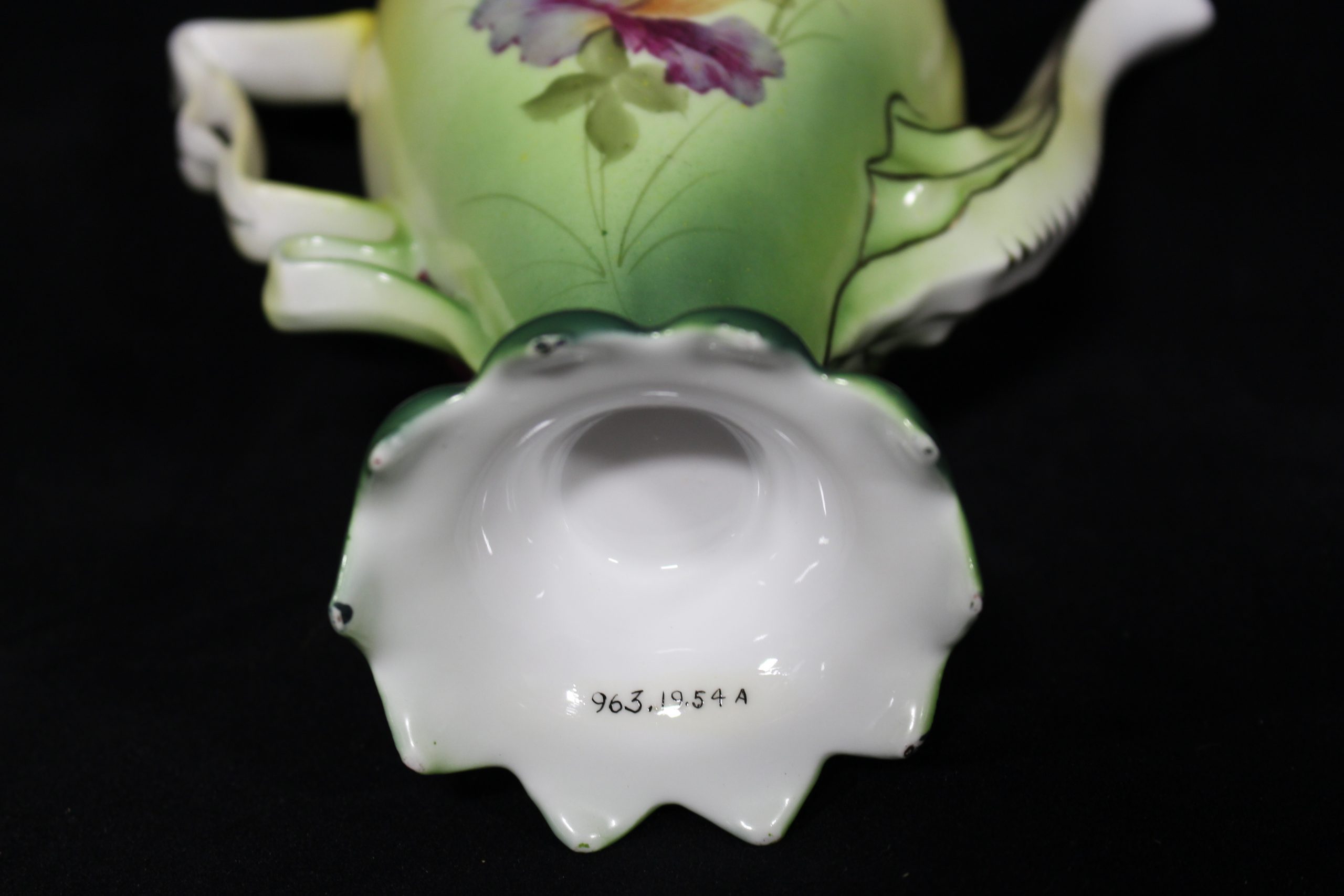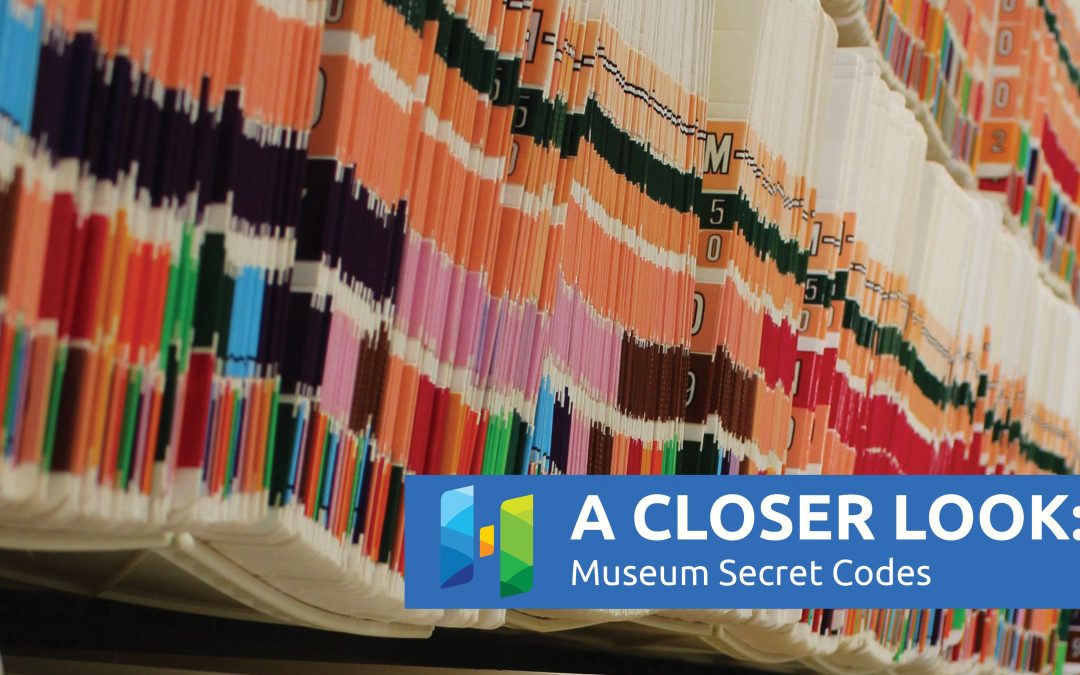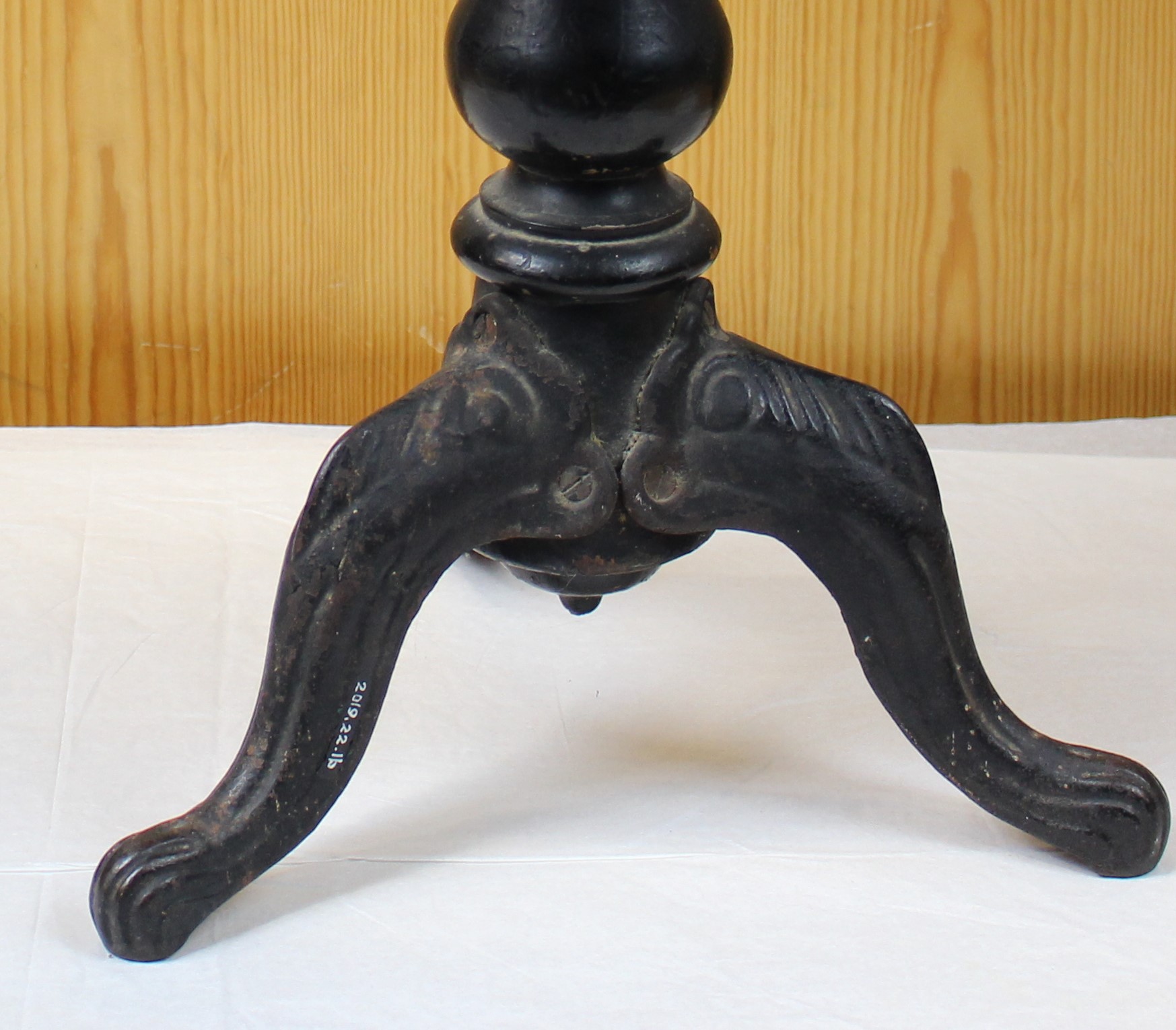Take a closer look at the Huron County Museum & Historic Gaol and its collections as staff share stories about some well-known and some not-so-well-known features, artifacts, and more. In a three-part series, Registrar Patti Lamb takes a closer look at a museum’s secret codes. Read Part 2 on Collecting at the Huron County Museum and Part 3 on Deaccessioning Artifacts.

The Object Identification Number is an important part of the “secret language” used by museum professionals.
Most museum visitors are aware that the artifacts in the museum have numbers written on them. Most also know that the numbers somehow help to identify the objects. What most don’t realize, however, is what the numbers mean to the museum staff.
When museum staff look at an Object Identification Number (object ID), they can instantly tell what year the object came to the museum; if there were other objects that came in before it that particular year; whether it was part of a group of objects; and in some cases, whether or not there is a known donor. Using an object ID number to look up an object record in the museum database will show the staff everything that is known about the object. This includes physical description, donor, provenance (history), condition, use, and where in the museum the object is located.
Traditionally, museums use a three part numbering system. The first part lets staff know the year the artifact came into the museum collection; the second part indicates the group number of the artifacts that came in during a particular year; and the last number is the object number within that group. The first two parts of the number are what is known as an accession number (an object or group of objects from a single source at one time). When the third part of the number is added on, it becomes an object ID number specific to that object.
Accession and object ID numbers are an important part of the “secret language” used by museum professionals. They allow us to record and store, in one spot, important information about the artifacts as well as help track and locate them. The object ID is as important as the artifact, and without it, access to the information about the artifact would be difficult to retain and retrieve.


